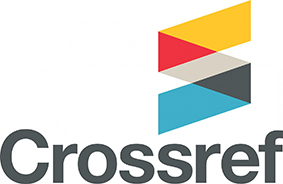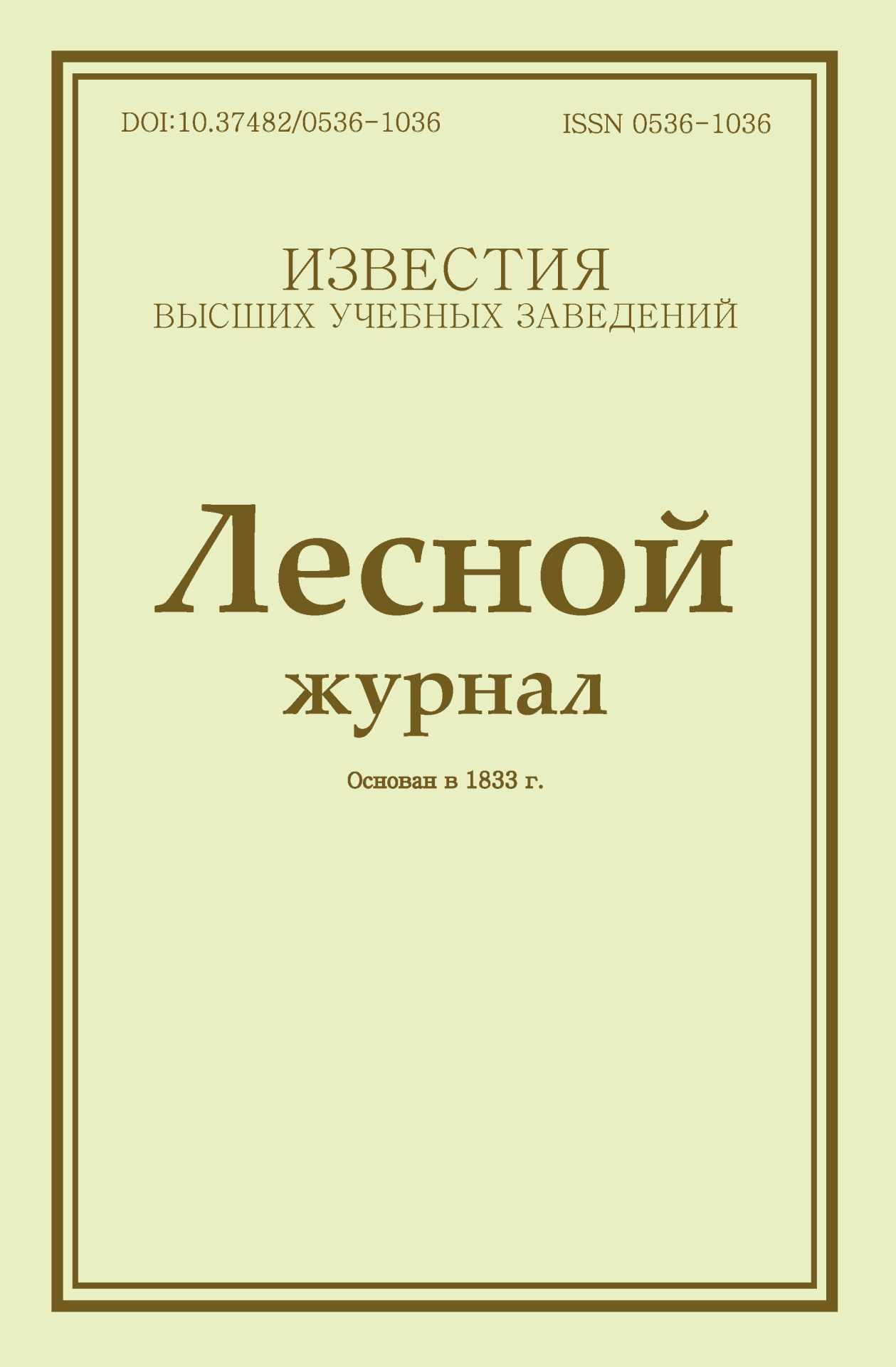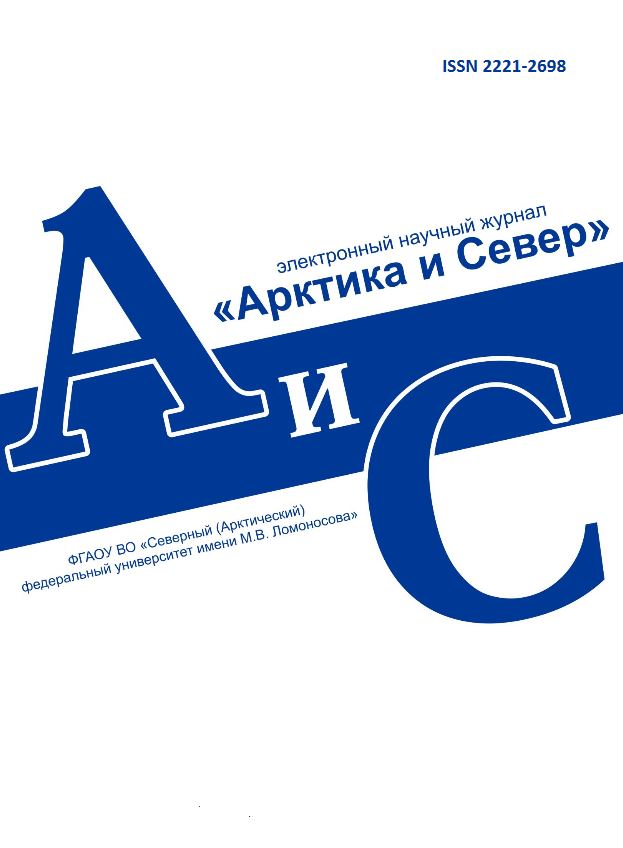Legal and postal addresses of the founder and publisher: Northern (Arctic) Federal University named after M.V. Lomonosov, Naberezhnaya Severnoy Dviny, 17, Arkhangelsk, 163002, Russian Federation Editorial office address: Journal of Medical and Biological Research, 56 ul. Uritskogo, Arkhangelsk Phone: (8182) 21-61-00, ext.18-20
E-mail: vestnik_med@narfu.ru ABOUT JOURNAL
|
Section: Review articles Download (pdf, 1MB )UDC612.821DOI10.37482/2687-1491-Z196AuthorsEkaterina V. Strel’nikova* ORCID: https://orcid.org/0009-0007-1611-073XMargarita A. Kashirina* ORCID: https://orcid.org/0009-0001-2895-0337 Anna O. Kantserova* ORCID: https://orcid.org/0000-0002-5513-8627 *Institute of Higher Nervous Activity and Neurophysiology of RAS (Moscow, Russia) Corresponding author: Ekaterina Strel’nikova, address: ul. Butlerova 5a, Moscow, 117485, Russia; e-mail: strelnikovaev@gmail.com AbstractThis review considers articles studying neural mechanisms of dual (cognitive-motor) tasks in healthy young and older people using electroencephalography (EEG) and functional near-infrared spectroscopy (fNIRS). A bibliometric network is presented showing the frequency of keywords (postural balance, gait, walking, neuropsychological tests, attention) used in publications and the associations between these keywords, as well as demonstrating the relevance of applying the cognitive-motor paradigm as a method for studying the neurophysiological mechanisms of dual-tasking. The design of the cognitive-motor dual-task paradigm used in the works varied greatly. The cognitive tasks included various computational-logical, spatial-figurative, auditory and verbal tasks as well as a modified version of a smartphone game. As motor tasks, static (stand, tandem stand) and dynamic (stand on a dynamic platform, treadmill walking, walking under the actual conditions of outside environment) tasks were used. Spatial and frequency distribution of brain activation when performing various types of cognitive and motor tasks was considered. Frontal cortical haemodynamic correlates of dual-tasking were demonstrated. Possible interpretations of research results proposed by the authors of the articles under study were indicated. The conclusions demonstrate that the actual set of tasks used in the experiment plays an essential role in the way the dual task will be processed. Dual-tasking involves activating executive functions that coordinate information processing in each task (cognitive or motor). The dual-task paradigm can be used as a model to investigate and evaluate executive functions, attention, working memory and postural control.Keywordsdual task, multitasking, cognitive-motor paradigm, neurophysiological mechanisms, electroencephalography, functional near-infrared spectroscopyReferences1. IBM Operating System/360: Concepts and Facilities. IBM Systems Reference Library. New York, 1965. 93 p.2. Koch I., Poljac E., Müller H., Kiesel A. Cognitive Structure, Flexibility, and Plasticity in Human Multitasking – an Integrative Review of Dual-Task and Task-Switching Research. Psychol. Bull., 2018, vol. 144, no. 6, pp. 557–583. https://doi.org/10.1037/bul0000144 3. Pashler H. Task Switching and Multitask Performance. Monsell S., Driver J. (eds.). Control of Cognitive Processes: Attention and Performance XVIII. London, 2000, pp. 277–307. 4. Zhavoronkova L.A., Kushnir E.M., Zharikova A.V., Kuptsova S.V., Shevtsova T.P., Kulikov M.A., Voronov V.G. Elektroentsefalograficheskie kharakteristiki zdorovykh lyudey s raznoy uspeshnost’yu vypolneniya dvoynykh zadach (poznyy kontrol’ i schet) [Electroencephalographic Parameters of Healthy Persons with Different Successfulness of Dual-Task Performance (Postural Control and Calculation)]. Zhurnal vysshey nervnoy deyatel’nosti im. I.V. Pavlova, 2015, vol. 65, no. 5, pp. 597–606. https://doi.org/10.7868/S0044467715050160 5. Zhavoronkova L.A., Pozdneev A.V., Kuptsova S.V., Shevtsova T.P., Moraresku S.I. Intracortical Connections in Dual Tasks Including Motor and Computing–Logical or Spatial–Visual Components. Hum. Physiol., 2019, vol. 45, no. 2, pp. 126–136. https://doi.org/10.1134/S0362119719020130 6. Ozdemir R.A., Contreras-Vidal J.L., Lee B.-C., Paloski W.H. Cortical Activity Modulations Underlying AgeRelated Performance Differences During Posture-Cognition Dual Tasking. Exp. Brain Res., 2016, vol. 234, no. 11, pp. 3321–3334. https://doi.org/10.1007/s00221-016-4730-5 7. Bohle H., Rimpel J., Schauenburg G., Gebel A., Stelzel C., Heinzel S., Rapp M., Granacher U. Behavioral and Neural Correlates of Cognitive-Motor Interference During Multitasking in Young and Old Adults. Neural Plast., 2019, vol. 2019. Art. no. 9478656. https://doi.org/10.1155/2019/9478656 8. Beurskens R., Steinberg F., Antoniewicz F., Wolff W., Granacher U. Neural Correlates of Dual-Task Walking: Effects of Cognitive versus Motor Interference in Young Adults. Neural Plast., 2016, vol. 2016. Art. no. 8032180. https://doi.org/10.1155/2016/8032180 9. Rubega M., Formaggio E., Di Marco R., Bertuccelli M., Tortora S., Menegatti E., Cattelan M., Bonato P., Masiero S., Del Felice A. Cortical Correlates in Upright Dynamic and Static Balance in the Elderly. Sci. Rep., 2021, vol. 11, no. 1. Art. no. 14132. https://doi.org/10.1038/s41598-021-93556-3 10. Kahya M., Liao K., Gustafson K.M., Akinwuntan A.E., Manor B., Devos H. Cortical Correlates of Increased Postural Task Difficulty in Young Adults: A Combined Pupillometry and EEG Study. Sensors (Basel), 2022, vol. 22, no. 15. Art. no. 5594. https://doi.org/10.3390/s22155594 11. Kahya M., Gouskova N.A., Lo O.-Y., Zhou J., Cappon D., Finnerty E., Pascual-Leone A., Lipsitz L.A., Hausdorff J.M., Manor B. Brain Activity During Dual-Task Standing in Older Adults. J. Neuroeng. Rehabil., 2022, vol. 19, no. 1. Art. no. 123. https://doi.org/10.1186/s12984-022-01095-3 12. Babiloni C., Del Percio C., Arendt-Nielsen L., Soricell A., Romani G.L., Rossini P.M., Capotosto P. Cortical EEG Alpha Rhythms Reflect Task-Specific Somatosensory and Motor Interactions in Humans. Clin. Neurophysiol., 2014, vol. 125, no. 10, pp. 1936–1945. https://doi.org/10.1016/j.clinph.2014.04.021 13. Başar E. A Review of Alpha Activity in Integrative Brain Function: Fundamental Physiology, Sensory Coding, Cognition and Pathology. Int. J. Psychophysiol., 2012, vol. 86, no. 1, pp. 1–24. https://doi.org/10.1016/j.ijpsycho.2012.07.002 14. Shaw E.P., Rietschel J.C., Hendershot B.D., Pruziner A.L., Miller M.W., Hatfield B.D., Gentili R.J. Measurement of Attentional Reserve and Mental Effort for Cognitive Workload Assessment Under Various Task Demands During Dual-Task Walking. Biol. Psychol., 2018, vol. 134, pp. 39–51. https://doi.org/10.1016/j.biopsycho.2018.01.009 15. Domínguez M.C., O’Keeffe C., O’Rourke E., Feerick N., Reilly R.B. Cortical Theta Activity and Postural Control in Non-Visual and High Cognitive Load Tasks: Impact for Clinical Studies. 2019 41st Annual International Conference of the IEEE Engineering in Medicine and Biology Society (EMBC). Berlin, 2019, pp. 1539–1542. https://doi.org/10.1109/embc.2019.8857663 16. Kenny R.P.W., Eaves D.L., Martin D., Behmer L.P., Dixon J. The Effects of Textured Insoles on Cortical Activity and Quiet Bipedal Standing with and Without Vision: An EEG Study. J. Mot. Behav., 2020, vol. 52, no. 4, pp. 489–501. https://doi.org/10.1080/00222895.2019.1648237 17. Peterson S.M., Ferris D.P. Differentiation in Theta and Beta Electrocortical Activity Between Visual and Physical Perturbations to Walking and Standing Balance. eNeuro, 2018, vol. 5, no. 4. Art. no. ENEURO.0207-18.2018. https://doi.org/10.1523/eneuro.0207-18.2018 18. Nguyen T.V., Balachandran P., Muggleton N.G., Liang W.-K., Juan C.-H. Dynamical EEG Indices of Progressive Motor Inhibition and Error-Monitoring. Brain Sci., 2021, vol. 11, no. 4. Art. no. 478. https://doi.org/10.3390/brainsci11040478 19. Corp D.T., Youssef G.J., Clark R.A., Gomes-Osman J., Yücel M.A., Oldham S.J., Aldraiwiesh S., Rice J., PascualLeone A., Rogers M.A. Reduced Motor Cortex Inhibition and a ‘Cognitive-First’ Prioritisation Strategy for Older Adults During Dual-Tasking. Exp. Gerontol., 2018, vol. 113, pp. 95–105. https://doi.org/10.1016/j.exger.2018.09.018 20. Putman P., Verkuil B., Arias-Garcia E., Pantazi I., van Schie C. EEG Theta/Beta Ratio as a Potential Biomarker for Attentional Control and Resilience Against Deleterious Effects of Stress on Attention. Cogn. Affect. Behav. Neurosci., 2014, vol. 14, no. 2, pp. 782–791. https://doi.org/10.3758/s13415-013-0238-7 21. Angelidis A., van der Does W., Schakel L., Putman P. Frontal EEG Theta/Beta Ratio as an Electrophysiological Marker for Attentional Control and Its Test-Retest Reliability. Biol. Psychol., 2016, vol. 121, pt. A, pp. 49–52. https://doi.org/10.1016/j.biopsycho.2016.09.008 22. Pizzamiglio S., Naeem U., Abdalla H., Turner D.L. Neural Correlates of Single- and Dual-Task Walking in the Real World. Front. Hum. Neurosci., 2017, vol. 11. Art. no. 460. https://doi.org/10.3389/fnhum.2017.00460 23. Bulea T.C., Kim J., Damiano D.L., Stanley C.J., Park H.-S. Prefrontal, Posterior Parietal and Sensorimotor Network Activity Underlying Speed Control During Walking. Front. Hum. Neurosci., 2015, vol. 9. Art. no. 247. https://doi.org/10.3389/fnhum.2015.00247 24. Beurskens R., Helmich I., Rein R., Bock O. Age-Related Changes in Prefrontal Activity During Walking in Dual-Task Situations: A fNIRS Study. Int. J. Psychophysiol., 2014, vol. 92, no. 3, pp. 122–128. https://doi.org/10.1016/j. ijpsycho.2014.03.005 25. Hazlett E.A., Buchsbaum M.S., Mohs R.C., Spiegel-Cohen J., Wei T.-C., Azueta R., Haznedar M.M., Singer M.B., Shihabuddin L., Luu-Hsia C., Harvey P.D. Age-Related Shift in Brain Region Activity During Successful Memory Performance. Neurobiol. Aging, 1998, vol. 19, no. 5, pp. 437–445. https://doi.org/10.1016/s0197-4580(98)00075-x 26. Reuter-Lorenz P.A., Cappell K.A. Neurocognitive Aging and the Compensation Hypothesis. Curr. Dir. Psychol. Sci., 2008, vol. 17, no. 3, pp. 177–182. http://dx.doi.org/10.1111/j.1467-8721.2008.00570.x 27. Mirelman A., Maidan I., Bernad-Elazari H., Nieuwhof F., Reelick M., Giladi N., Hausdorff J.M. Increased Frontal Brain Activation During Walking While Dual Tasking: An fNIRS Study in Healthy Young Adults. J. Neuroeng. Rehabil., 2014, vol. 11, no. 1. Art. no. 85. https://doi.org/10.1186/1743-0003-11-85 28. Mirelman A., Maidan I., Bernad-Elazari H., Shustack S., Giladi N., Hausdorff J.M. Effects of Aging on Prefrontal Brain Activation During Challenging Walking Conditions. Brain Cogn., 2017, vol. 115, pp. 41–46. https:// doi.org/10.1016/j.bandc.2017.04.002 29. Steffener J., Stern Y. Exploring the Neural Basis of Cognitive Reserve in Aging. Biochim. Biophys. Acta, 2012, vol. 1822, no. 3, pp. 467–473. https://doi.org/10.1016/j.bbadis.2011.09.012 30. Lin M.-I.B., Lin K.-H. Walking While Performing Working Memory Tasks Changes the Prefrontal Cortex Hemodynamic Activations and Gait Kinematics. Front. Behav. Neurosci., 2016, vol. 10. Art. no. 92. https://doi.org/10.3389/fnbeh.2016.00092 31. Barulli D., Stern Y. Efficiency, Capacity, Compensation, Maintenance, Plasticity: Emerging Concepts in Cognitive Reserve. Trends Cogn. Sci., 2013, vol. 17, no. 10, pp. 502–509. https://doi.org/10.1016/j.tics.2013.08.012 32. Takeuchi N., Mori T., Suzukamo Y., Tanaka N., Izumi S.-I. Parallel Processing of Cognitive and Physical Demands in Left and Right Prefrontal Cortices During Smartphone Use While Walking. BMC Neurosci., 2016, vol. 17. Art. no. 9. https://doi.org/10.1186/s12868-016-0244-0 33. Cabeza R. Hemispheric Asymmetry Reduction in Older Adults: The HAROLD Model. Psychol. Aging, 2002, vol. 17, no. 1, pp. 85–100. https://doi.org/10.1037//0882-7974.17.1.85 34. Rosso A.L., Cenciarini M., Sparto P.J., Loughlin P.J., Furman J.M., Huppert T.J. Neuroimaging of an Attention Demanding Dual-Task During Dynamic Postural Control. Gait Posture, 2017, vol. 57, pp. 193–198. https://doi.org/10.1016/j.gaitpost.2017.06.013 35. Karim H.T., Fuhrman S.I., Furman J.M., Huppert T.J. Neuroimaging to Detect Cortical Projection of Vestibular Response to Caloric Stimulation in Young and Older Adults Using Functional Near-Infrared Spectroscopy (fNIRS). Neuroimage, 2013, vol. 76, pp. 1–10. https://doi.org/10.1016/j.neuroimage.2013.02.061 36. Karim H., Schmidt B., Dart D., Beluk N., Huppert T. Functional Near-Infrared Spectroscopy (fNIRS) of Brain Function During Active Balancing Using a Video Game System. Gait Posture, 2012, vol. 35, no. 3, pp. 367–372. https://doi.org/10.1016/j.gaitpost.2011.10.007 37. Szameitat A.J., Schubert T., Müller K., von Cramon D.Y. Localization of Executive Functions in Dual-Task Performance with fMRI. J. Cogn. Neurosci., 2002, vol. 14, no. 8, pp. 1184–1199. https://doi.org/10.1162/089892902760807195 38. Chen M., Pillemer S., England S., Izzetoglu M., Mahoney J.R., Holtzer R. Neural Correlates of Obstacle Negotiation in Older Adults: An fNIRS Study. Gait Posture, 2017, vol. 58, pp. 130–135. https://doi.org/10.1016/j.gaitpost.2017.07.043 39. Chen Y., Cao Z., Mao M., Sun W., Song Q., Mao D. Increased Cortical Activation and Enhanced Functional Connectivity in the Prefrontal Cortex Ensure Dynamic Postural Balance During Dual-Task Obstacle Negotiation in the Older Adults: A fNIRS Study. Brain Cogn., 2022, vol. 163. Art. no. 105904. https://doi.org/10.1016/j.bandc.2022.105904 40. Chen Y., Yu Y., Niu R., Liu Y. Selective Effects of Postural Control on Spatial vs. Nonspatial Working Memory: A Functional Near-Infrared Spectral Imaging Study. Front. Hum. Neurosci., 2018, vol. 12. Art. no. 243. https://doi.org/10.3389/fnhum.2018.00243 41. Sala-Llonch R., Palacios E.M., Junqué C., Bargalló N., Vendrell P. Functional Networks and Structural Connectivity of Visuospatial and Visuoperceptual Working Memory. Front. Hum. Neurosci., 2015, vol. 9. Art. no. 340. https://doi.org/10.3389/fnhum.2015.00340 42. de Souza Custódio J.C., Martins C.W., Lugon M.D., Fregni F., Nakamura-Palacios E.M. Epidural Direct Current Stimulation over the Left Medial Prefrontal Cortex Facilitates Spatial Working Memory Performance in Rats. Brain Stimul., 2013, vol. 6, no. 3, pp. 261–269. https://doi.org/10.1016/j.brs.2012.07.004 43. Dary Z., Lenggenhager B., Lagarde S., Medina Villalon S., Bartolomei F., Lopez C. Neural Bases of the Bodily Self as Revealed by Electrical Brain Stimulation: A Systematic Review. Hum. Brain Mapp., 2023, vol. 44, no. 7, pp. 2936–2959. https://doi.org/10.1002/hbm.26253 44. Marusic U., Taube W., Morrison S.A., Biasutti L., Grassi B., De Pauw K., Meeusen R., Pisot R., Ruffieux J. Aging Effects on Prefrontal Cortex Oxygenation in a Posture-Cognition Dual-Task: An fNIRS Pilot Study. Eur. Rev. Aging Phys. Act., 2019, vol. 16. Art. no. 2. https://doi.org/10.1186/s11556-018-0209-7 45. St. George R.J., Hinder M.R., Puri R., Walker E., Callisaya M.L. Functional Near-Infrared Spectroscopy Reveals the Compensatory Potential of Pre-Frontal Cortical Activity for Standing Balance in Young and Older Adults. Neuroscience, 2021, vol. 452, pp. 208–218. https://doi.org/10.1016/j.neuroscience.2020.10.027 46. Saraiva M., Castro M.A., Vilas-Boas J.P. Muscular and Prefrontal Cortex Activity During Dual-Task Performing in Young Adults. Eur. J. Investig. Health Psychol. Educ., 2023, vol. 13, no. 4, pp. 736–747. https://doi.org/10.3390/ejihpe13040055 47. Bayot M., Dujardin K., Tard C., Defebvre L., Bonnet C.T., Allart E., Delval A. The Interaction Between Cognition and Motor Control: A Theoretical Framework for Dual-Task Interference Effects on Posture, Gait Initiation, Gait and Turning. Neurophysiol. Clin., 2018, vol. 48, no. 6, pp. 361–375. https://doi.org/10.1016/j.neucli.2018.10.003 48. Tirapu-Ustárroz J., García-Molina A., Luna-Lario P., Roig-Rovira T., Pelegrín-Valero C. Modelos de funciones y control ejecutivo (I). Rev. Neurol., 2008, vol. 46, no. 11, pp. 684–692. http://dx.doi.org/10.33588/rn.4611.2008119 |
Make a Submission
INDEXED IN:
|
Продолжая просмотр сайта, я соглашаюсь с использованием файлов cookie владельцем сайта в соответствии с Политикой в отношении файлов cookie, в том числе на передачу данных, указанных в Политике, третьим лицам (статистическим службам сети Интернет).




.jpg)

